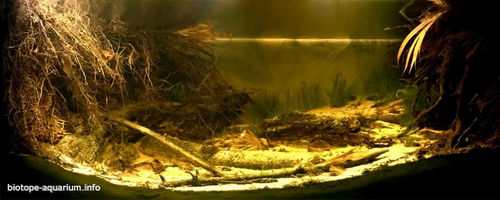Arifhb’s Aquatics
New Member
Hi to everyone!
It is a biotope I created, inspired by the ponds formed during the flood period of the Tomo River, a branch of the Orinoco River drainage, one of the longest river systems in South America, close to the Colombia-Venezuela border. In a savanna landscape, terrestrial grasses and reeds grow, in which only members of apistogramma hongsloi and a few hemigrammus sp. It was an area of its kind. Since I see that the hongsloi colony is dominant in the images I watch and the images I look at; I only used trio-shaped hongsloi as a genre. Dimensions of the 50x35x32h tank. At the base, there is quartz sand, reed branches and leaves in 05 mm gray tones. I planted dwarf echinodorus as a plant. Since the region is a pond and reed land, I simulated the materials on the bottom in this way.
Two examples from the region;
As filtration, I used 501 external filter (300 l/s) and seachem de nitrate, 30 ppi biological sponge and sera crystal clear. I am very satisfied with the filter and it is very very sufficient for such nano tanks. Since the water in the region is slightly tannic, I did not use peat and blackwater additives; dry botanicals in the base were effective in giving this color. I provide the lighting with a 10 watt 1200 lumens 6000k led projector. Visually, sunlight and water waves provide good refraction. This also affects the realism.
Since the water values of the habitat are soft and slightly acidic, I more or less match these values with ro water mixed with 4/1 tap water. Fish are very healthy and enjoyable. This tank has been one of the most appealing tanks in terms of similarity and naturalness among the biotope installations I have done so far.
I hope you like it and it is appreciated. I had prepared for BAC 2023. I will also add the video.
Enjoyable hobbies..



